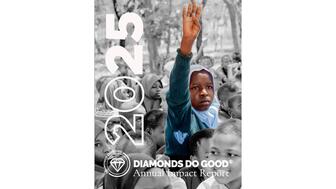Customs Indefinitely Postpones Requirement to Disclose Country of Mining
Originally slated to take effect in April, official U.S. Customs and Border Protection documents now show the implementation date as “TBD.”

While CBP’s earlier announcement of the new requirement stated it would take effect in April, a newer Automated Customs Environment (ACE) schedule has the enactment date as “TBD,” or to be determined.
The new requirement is an addition to the regulations already in place, which require importers to self-certify that the diamonds they are importing into the U.S. are not from Russia.
If and when the new country of mining requirement takes effect, a new field for “country of mining” will be added to the Automated Customs Environment (ACE) manifest that importers must fill out, along with an option to upload supporting documentation.
Jewelers of America said it recently updated its members on the current CBP requirements for diamond imports, including information about the new “country of mining” requirement that was expected in April.
The organization sent a follow-up note over the weekend notifying members of the delay in implementation.
“Given how quickly the situation can change—one way or another—we remain engaged and responsive to our members as questions come up, but our overriding guidance from the start of the war has been that Jewelers of America members should not source diamonds that emanate from Russia, regardless of where they are cut and polished, and [be] proactive by communicating with suppliers and conducting due diligence of their supply chains,” the organization said in a statement.
“We want members to be prepared, regardless of specific regulations that could be in the pipeline.”
Last week, the EU announced that it now will require diamond importers to provide information about where exactly their diamonds were mined.
As part of its 16th package of sanctions against Russia, the EU said that, as of March 1, importers will be required to provide a Kimberley Process certificate that states the exact country of origin for all the rough diamonds in each shipment.
The EU also postponed implementation of a system for tracking rough diamonds from mine to market, setting a new deadline of Jan. 1, 2026, citing the need for more time to refine a system.
The G-7 announced in December 2023 that member countries that are “major” importers of rough diamonds need to establish a “robust traceability-based verification and certification mechanism” for tracking diamonds through the supply chain.
The G-7 originally set a deadline of Sept. 1, 2024, for the creation and implementation of such a system, a deadline the EU has now pushed back twice, first to March 1, 2025, and now to the beginning of 2026.
The Latest

The annual report highlights how it supported communities in areas where natural diamonds are mined, crafted, and sold.

Footage of a fight breaking out in the NYC Diamond District was viewed millions of times on Instagram and Facebook.

The supplier has a curated list of must-have tools for jewelers doing in-house custom work this year.

How Jewelers of America’s 20 Under 40 are leading to ensure a brighter future for the jewelry industry.

The Signet Jewelers-owned store, which turned 100 last year, calls its new concept stores “The Edit.”


Linda Coutu is rejoining the precious metals provider as its director of sales.

The governing board welcomed two new members, Claire Scragg and Susan Eisen.

Roseco’s 704-page catalog showcases new lab-grown diamonds, findings, tools & more—available in print or interactive digital editions.

Sparkle with festive diamond jewelry as we celebrate the beginning of 2026.

The master jeweler, Olympian, former senator, and Korean War veteran founded the brand Nighthorse Jewelry.

In its annual report, Pinterest noted an increase in searches for brooches, heirloom jewelry, and ‘80s luxury.

Executive Chairman Richard Baker will take over the role as rumors swirl that a bankruptcy filing is imminent for the troubled retailer.

Mohr had just retired in June after more than two decades as Couture’s retailer liaison.

Shekhar Shah of Real Gems Inc. will serve as president of the Indian Diamond & Colorstone Association in 2026.

This year’s good luck charm features the mythical horse Pegasus, and is our first Piece of the Week of the new year.

Articles about crime, engagement rings, and a necklace worn in the World Series generated the most interest among readers.

As part of the leadership transition, Sherry Smith will take on the role of vice president of coaching strategy and development.

It marks the third time the country has headed the Kimberley Process. Ghana will serve as vice chair.

The new Bulova x Stetson designs highlight two animals often associated with the American West—the bison and the Texas Longhorn.

Its residency at Yamron Jewelers will run through May 2026.

From influential executives to innovative designers, we pay tribute to the people we said goodbye to this year.

The retailer is expanding into areas with large Indian and South Asian populations.

The Italian brand has opened its first flagship amid the peaks of the Dolomites in Madonna di Campiglio, Italy.

The new curation at the Natural History Museum of Los Angeles County showcases rare gem and mineral specimens in their uncut, natural state.

The couple pleaded guilty to concealing at least $127 million in cash transactions at its precious metals businesses.

Consumers shared concerns about prices, inflation, tariffs, trade, and politics in the survey’s write-in response section.

In February 2026, the auction house will move its headquarters to the former Steinway Hall, a neoclassical landmark on Billionaires’ Row.




























